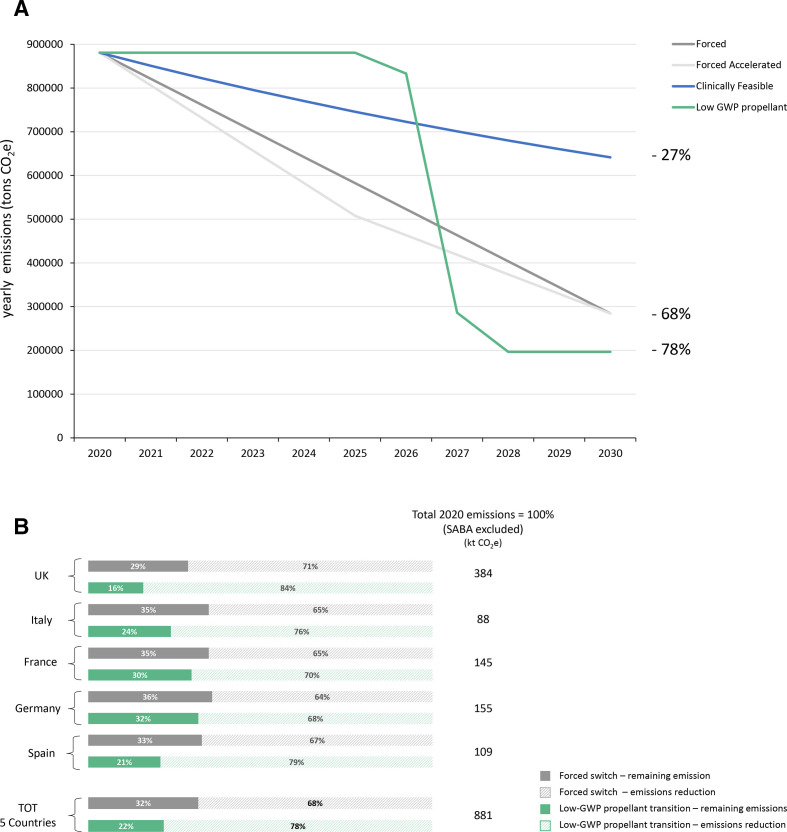Figure 3.
Comparison of (A) the reduction trends with switch from pMDIs to DPI/SMIs (three subscenarios) and low-GWP propellant transition (whole market excluding SABA inhalers) across the five countries and (B) differences in the % of total CO2e emissions reduction, by 2030, across the five countries, between the two most relevant scenarios (forced switch from pMDIs to DPI/SMIs and low-GWP propellant transition—whole market excluding SABA inhalers). When implemented across the whole inhaler market (excluding SABA inhalers), transition to low-GWP propellant pMDIs results in the greatest reductions in yearly emissions by 2030 for all five reference markets. DPI forced base: substitution of 80% of pMDIs with DPI/SMIs by 2030, assuming a linear trend; DPI forced accelerated: substitution of 80% of pMDIs with DPI/SMIs by 2030, but with 50% substitution by 2025 and the remaining 30% achieved between 2025 and 2030; DPI clinically feasible: based on historical data, every year there is substitution of pMDIs with DPI/SMIs for 5% of the previous year’s pMDI sales, resulting in a non-linear trend and a final reduction of 40% by 2030; Low-GWP propellant: transition from current propellant to low-GWP propellant (hydrofluoroalkane-152a). CO2e, carbon dioxide equivalent; DPI, dry-powder inhaler; GWP, global warming potential (100-year time horizon); pMDI, pressurised metered-dose inhaler; SABA, short-acting β2-agonist; SMI, soft mist inhaler.

